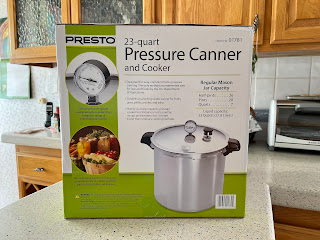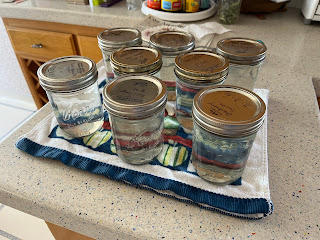I don't think I've made fish for dinner since I started taking fish oil supplements earlier this year. That is so not the point of taking them. They're a staple in the Mediterranean Diet, and really easy to prepare in so many ways. I just tend to gravitate toward chicken when I think of a non-mammal meat, not fish.
The point of this dish was to have something to go with a cold soup and greens. My kale seems to be the most productive thing in this summer's garden. No idea what I did, but I'm harvesting what chops up to a quart every few weeks. I ignored it for a month, and ended up with a gallon bag in addition to the six cups I cooked up that night. Anything I'm not using goes in the freezer or to my boss, who is the only one in her family willing to eat kale. I expect them to start bolting any day now, so all the freezer baggies will come in handy until I can get a new round going in a couple of months. It's already almost time to start my celery and lettuces for the fall! Doesn't feel like it.This recipe utilizes my favorite way to bake fish, which is essentially to steam it in the oven. While still flaky, it's also juicy and doesn't get that weird fish crust.
4 tilapia filets
1 Tb lemon juice
1 Tb oil
*1/2 C pesto
1. Preheat oven to 350º. Line roasting dish with parchment paper or foil.
2. Arrange tilapia in a single layer. Sprinkle with lemon juice and oil. Spread pesto evenly over tops of filets.3. Seal pan shut with foil. Bake until center of fish is 145º, opaque, and flaky, about 45 minutes (depending on thickness). Start checking around 30 minutes. Serve hot.
Difficulty rating π















































